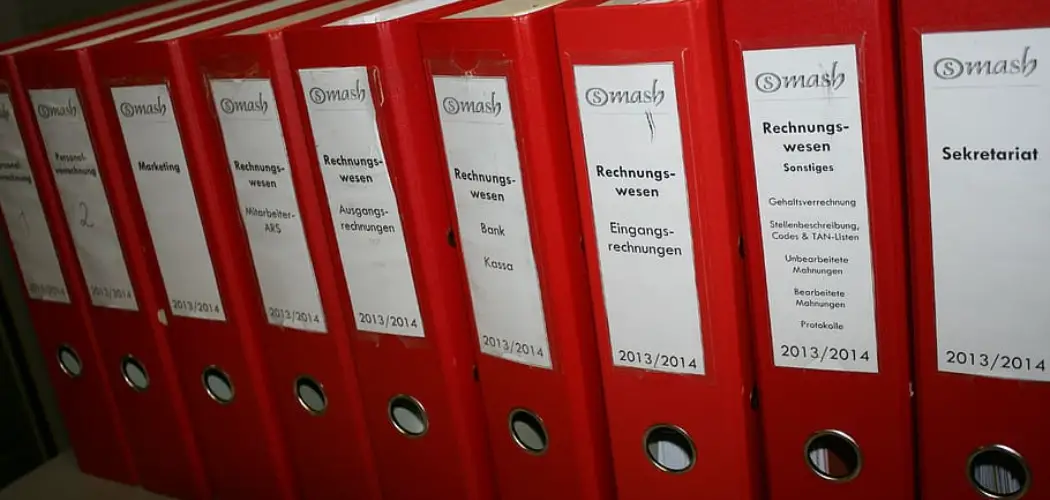Organizing a legal binder is essential for professionals in the legal field or individuals who want to keep their important legal documents in order. Whether you are a lawyer, a paralegal, or simply a diligent individual who wants to stay on top of their legal affairs, a well-organized legal binder can save you time, stress, and ensure that you have easy access to crucial information when you need it most.
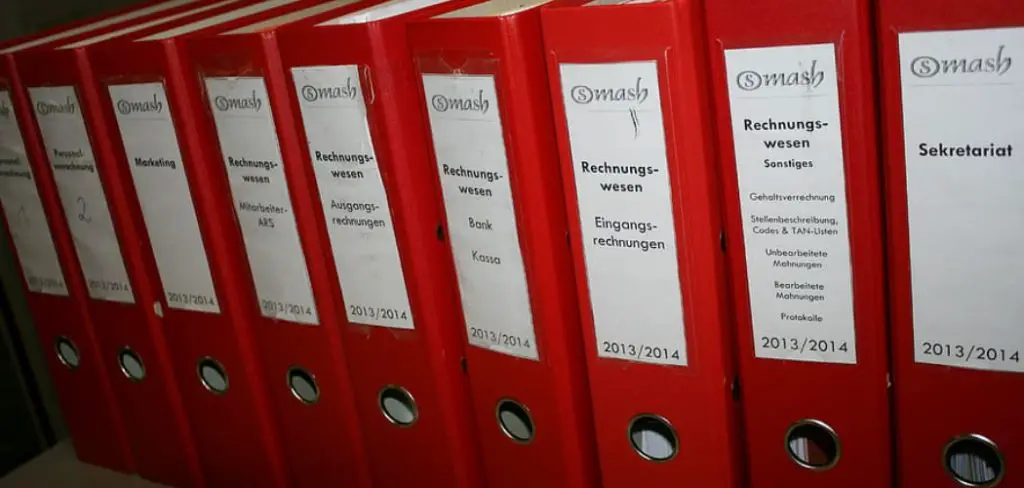
From contracts and agreements to court documents and case files, a legal binder serves as a central repository for all your legal paperwork. In this article, we will explore the key steps of how to organize a legal binder, including selecting the right binder, categorizing and labeling sections, implementing a filing system, and maintaining regular updates.
With a properly organized legal binder, you can streamline your workflow, enhance your efficiency, and have confidence in your ability to locate and retrieve important legal documents swiftly and effortlessly.
Importance of Organizing Legal Binders
Organizing legal binders is essential for any business or individual who needs to store documents related to their legal matters. It can make managing such documents easier, as well as provide a way for an individual or business to quickly locate records in the event of a legal issue.
By organizing your legal binder, you can ensure that all important information is easily accessible and that all legal documents are kept in an organized manner. This also helps to avoid any confusion or miscommunication when dealing with the legal aspects of your business or personal matters.
Organizing legal binders can also help you save time by quickly locating a document related to a particular case. By having everything organized, you can pull out the needed documents quickly and easily. This can save you time by not having to search through all of your binders in order to find a certain document or piece of information.
Organizing legal binders also helps ensure that important documents are not overlooked or misplaced, which in turn decreases the chances of miscommunication between parties involved in a legal case. By having everything organized, it will be easier for all parties to understand the legal aspects of the case and work together in a more effective manner.
Benefits of a Well-Structured and Easily Accessible Document System
Having a well-organized legal binder is essential to success in any business. Not only does it make finding the documents you need easier, but it also helps keep track of important paperwork. With a well-structured legal binder, you can stay organized and ensure that the documents you need are always accessible.
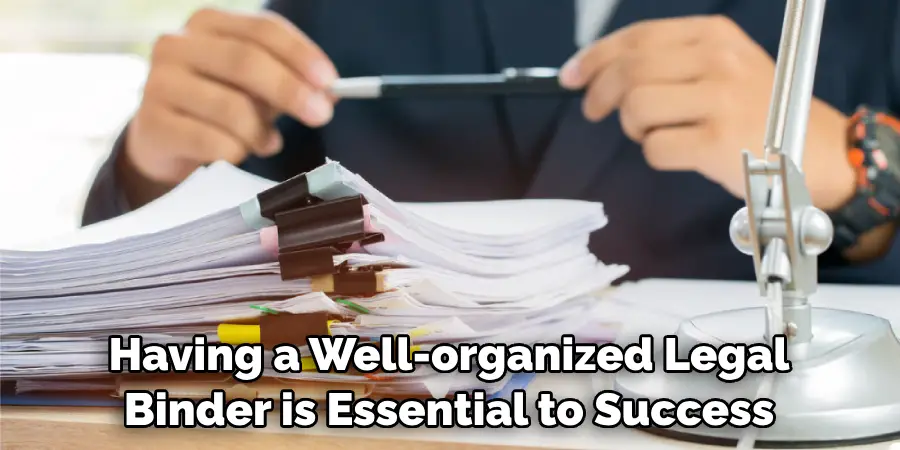
There are many benefits to having an organized document system. It allows for easier access to the information you need, reduces time spent searching for important documents, and helps avoid misplacing critical paperwork.
Having a well-structured binder also makes it easier to share documents with others in your organization or even outside parties if needed. Furthermore, organizing legal documents into binders is an efficient way to store them safely and securely in one place, so they don’t get lost or damaged over time.
Organizing a legal binder is not difficult if you know what to include. Creating a system that is both organized and easily accessible will help streamline your workflow and ensure documents can be located quickly when needed. With the right structure in place, you can make sure that important information is always available at the right time.
Having an organized legal binder will save you time in the long run and give you peace of mind knowing that your documents are safe and secure. By taking the time to create a well-structured document system, you’ll be ready for whatever comes your way.
10 Methods How to Organize a Legal Binder
Method 1: Select the Right Binder
Choosing the appropriate binder is crucial for organizing your legal documents effectively. Opt for a binder that is durable, spacious, and equipped with pockets or dividers to accommodate various types of documents.
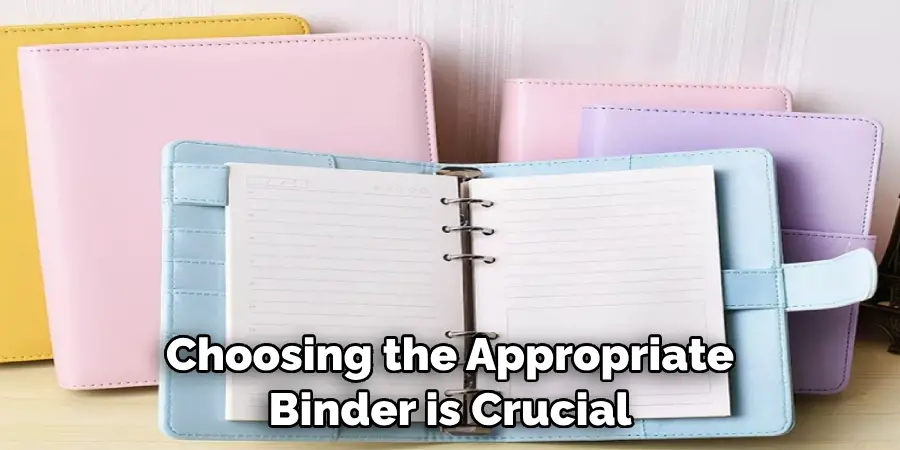
Consider using a binder with a clear cover to easily identify its contents. Additionally, label the binder with a title or subject to quickly recognize it. Make sure that the binder is designed to safeguard your documents from damage or moisture.
Method 2: Categorize and Label Sections
Divide your legal binder into different sections based on the type of documents you will be storing. Common categories may include contracts, court documents, research materials, correspondence, and reference materials. Label each section clearly to enhance accessibility and streamline your search process.
Be sure to include a table of contents for easy access. You may want to include page numbers and tabs to help you quickly locate what you are looking for. You may also want to consider including a safe deposit box key index to easily identify the contents of any documents stored in that location. Additionally,
Method 3: Implement a Filing System
Establish a consistent filing system within each section of your legal binder. Use either alphabetical or chronological order, depending on your preference and the nature of your documents. Within each category, consider using color-coded tabs or labels to further organize and distinguish different subcategories or topics.
For example, if you’re organizing a section of documents related to your family law case, you could separate the documents with tabs or labels for “agreements”, “financials”, and “court documents.”
Method 4: Utilize Sheet Protectors
To protect important legal documents such as contracts, agreements, or court orders, use sheet protectors. These transparent sleeves will safeguard your documents from wear and tear, spills, and accidental damage while keeping them easily accessible. It’s a good idea to label the sleeve with what is inside, such as “Lease Agreement” or “Court Order,” for easy reference.
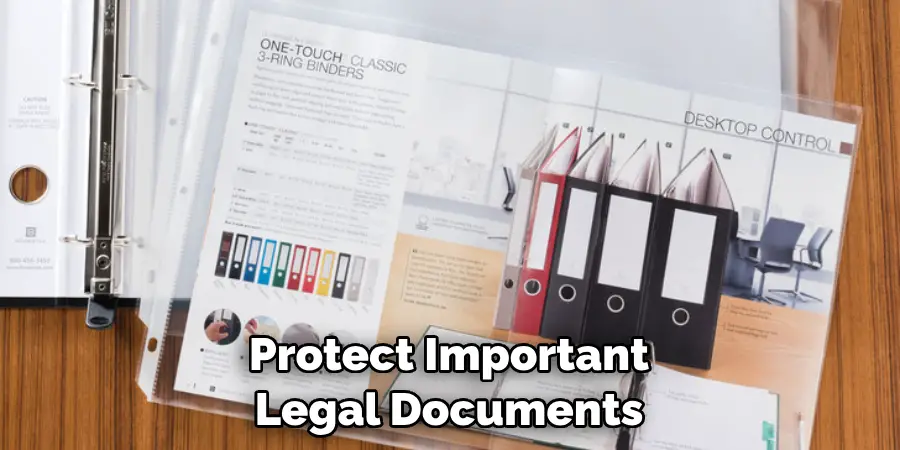
Sheet protectors can also be used to store business cards, photographs, or other items that you may need to refer to in the future. Keep them in the binder so that all relevant information is stored in one place. By using sheet protectors, you can help preserve the life of your documents and keep your legal binder organized.
Method 5: Create an Index
Include an index at the front or back of your legal binder. This index should list the documents contained within each section or category, enabling you to quickly locate specific items without having to flip through numerous pages. The index should include the name of the document, its date, and the page number where it can be found.
You may find that the index becomes a useful reference tool, as it provides an overview of all the documents you have stored in your binder. It also makes it easy to add or remove documents. Once you have finished creating your index, be sure to update it as needed. This will help ensure that your legal binder is always up-to-date and easy to use.
Method 6: Maintain a Table of Contents
For longer or more complex legal binders, consider including a table of contents. This document should outline the sections and their corresponding page numbers, providing an overview of the binder’s contents at a glance.
It should be placed at the front of the binder, helping to keep all documents organized. Additionally, it allows easy access for anyone needing to locate specific information or documents. The table of contents should also be updated as changes are made, allowing quick identification of any adjustments to the legal binder.
Method 7: Digitize Documents

Consider digitizing your legal documents as a backup measure. Scan important papers and save them as electronic files, either on your computer or a cloud-based storage system.
This ensures that even if your physical binder is lost or damaged, you will still have access to your documents. It is important to make sure your digital documents are secure, so be sure to utilize strong passwords and other security measures.
Additionally, make sure you update your digital documents regularly to ensure you have the most up-to-date versions. Once you have scanned and saved all important papers, consider shredding the originals to protect your personal information. Taking these extra steps will make it easier to access and manage your legal documents in an efficient manner.
Method 8: Regularly Purge Unnecessary Documents
To prevent your legal binder from becoming cluttered, set aside time regularly to review and purge any outdated or unnecessary documents. Remove any duplicate copies, expired contracts, or irrelevant materials to maintain an organized and streamlined binder.
Doing this will help keep your binder organized and make it easier to find the documents you need. Additionally, regularly purging unnecessary documents can save time and money. When documents are no longer relevant or needed, update your binder by removing them to prevent confusion or clutter.

Method 9: Implement Version Control
For documents that may undergo revisions or updates, implement a version control system. Use date stamps or version numbers to distinguish between different iterations of the same document, ensuring that you have access to the most recent and accurate information.
Version control also allows for easy tracking of changes, making it easier to identify which documents are associated with each case.
Additionally, be sure to securely store and delete old versions of documents to avoid confusion or data breaches. Utilizing a version control system is an essential step in organizing your legal binder, ensuring that all information is accurate and up-to-date.
Method 10: Update and Review Regularly
Finally, make it a habit to update and review your legal binder on a regular basis. Schedule periodic checks to ensure that all documents are current and accurate. This practice will help you stay organized, identify any missing or misplaced documents, and maintain the integrity of your legal binder.
Conclusion
Having a well-organized legal binder can help provide peace of mind and save time when it comes to accessing important legal information. Whether you need documents quickly for a court appearance or want to share them easily with an attorney, having everything organized in one place will make gathering the needed documents much simpler.
With these few easy steps, you can set yourself up for success and ensure your paperwork is always where you need it when you need it. Hopefully, this article gave you some helpful tips abouthow to organize a legal binder successfully, so now that you have the proper knowledge on how to get the job done, why not give it a try today?
You Can Check It Out to Build Office Cabinets

